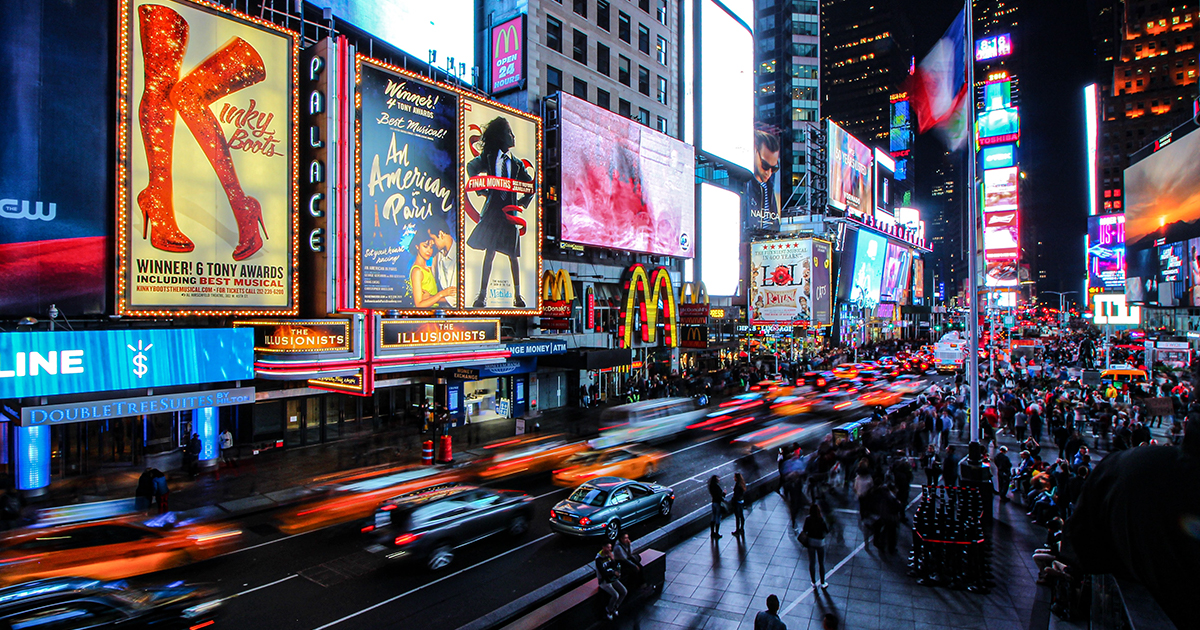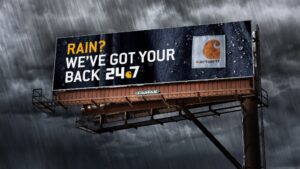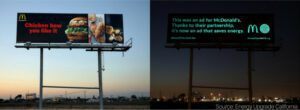Outdoor LED Billboard Advertising

Introduction to Billboard LED
Definition and Purpose of Billboard LED
Billboard LED is an abbreviation for Billboard Light-Emitting Diode, a type of digital signage that leverages LED technology to display advertisements, messages, and more. They’re commonly seen alongside highways, city streets, and at significant events. The purpose of LED billboards is to provide a medium that offers superior brightness, clarity, and energy efficiency than traditional billboard alternatives. These digital displays allow businesses to exhibit dynamic content that can be updated and managed remotely, opening a world of opportunities for real-time and contextually relevant advertising.
Benefits of Using LED Technology in Billboards
LED technology has revolutionized the world of billboards, offering myriad benefits that set it apart from traditional forms of outdoor advertising. Firstly, LED billboards outshine their counterparts with higher brightness, ensuring visibility even from afar and during all hours of the day. Furthermore, they offer dynamic content capabilities, enabling advertisers to switch their messaging in an instant, thereby accommodating various marketing campaigns simultaneously.
Additionally, LED billboards are known for their longevity and lower maintenance costs. Unlike traditional billboards, which require regular replacements of the printed banners, LED billboards can last for over 100,000 hours of use. They are more durable, weather-resistant, and offer significant energy savings, thus contributing to a lower LED billboard cost over its lifespan.
Overview of the Impact of LED on the Advertising Industry
LED technology has left an indelible mark on the advertising industry. The introduction of LED billboards has given birth to the era of digital outdoor advertising, propelling a significant shift from static print ads to dynamic digital displays. This shift has allowed for increased flexibility in content, with the ability to display multiple ads on a single billboard, adapt messaging in real-time, and even respond to environmental factors.
Furthermore, LED billboard advertising has created new revenue streams for advertising companies and businesses alike. The ability to display multiple ads throughout the day means more advertising space to sell and purchase. Additionally, it’s empowered advertisers to create more engaging, visually striking campaigns that capture consumer attention and generate a higher return on investment.
In essence, LED technology’s impact on the advertising industry has been transformative, ushering in a new era of outdoor advertising that is dynamic, efficient, and ultimately, more effective.
Types of Billboard LED Displays
Single-Color LED Displays
As the name suggests, single-color LED displays utilize only one color to present messages or content. Typically, this color is red or amber due to its high visibility. Single-color LED displays are often used when the message is simple and straightforward, such as parking signs, event notifications, or time and temperature displays. Despite their simplicity, these LED displays can still make a strong impact, especially when brightness and clarity are crucial.
Full-Color LED Displays
Full-color LED displays are the technicolor siblings of single-color displays. They leverage a mix of red, green, and blue diodes (RGB) that can combine to create a full spectrum of colors. This wide color range makes these displays the perfect choice for showcasing high-definition images, animations, and videos, allowing businesses to project vibrant and visually engaging content. In the context of advertising, full-color LED displays can significantly enhance ad recall and viewer engagement.
 Indoor vs. Outdoor LED Displays
Indoor vs. Outdoor LED Displays
While both indoor and outdoor LED displays leverage the same core technology, they differ in design and application. Indoor LED displays are generally designed for close viewing distances, often using smaller pixel pitches to provide high-resolution images. These are commonly used in malls, restaurants, or trade shows.
Outdoor LED displays, on the other hand, are built to withstand weather elements and are designed for longer viewing distances. They often have larger pixel pitches and higher brightness to ensure visibility even under direct sunlight. Outdoor LED billboards are typical in busy streets, highways, and public squares, making a bold statement with their size and brightness.
Different Pixel Pitches and Their Significance
Pixel pitch refers to the distance from the center of one pixel to the center of the adjacent pixel in an LED display, usually measured in millimeters. The pixel pitch is significant because it directly affects the display’s resolution and optimal viewing distance.
Smaller pixel pitches mean more pixels are packed into a given space, resulting in higher resolution and clearer images. These are ideal for indoor displays where viewers are relatively close. Larger pixel pitches, conversely, provide less detailed but brighter images, suitable for outdoor LED billboards viewed from a distance. Understanding pixel pitches is essential when choosing the right LED billboard for your advertising needs.
Advantages of Billboard LED
High Visibility and Brightness
LED billboards are known for their high visibility and brightness, making them stand out, day or night, rain or shine. The bright, vivid colors of LED displays capture attention even from great distances or in busy, cluttered environments, making them a potent tool for businesses seeking to increase brand visibility.
Energy Efficiency and Cost-Effectiveness
LED technology is remarkably energy-efficient, consuming less power than most other lighting solutions. This efficiency not only reduces the environmental impact but also significantly lowers the operational costs of running an LED billboard. Coupled with their extended lifespan and reduced maintenance needs, LED billboards emerge as a highly cost-effective outdoor advertising solution.
Improved Targeting and Advertising Effectiveness
LED billboard advertising allows businesses to tailor and schedule their content according to the time of day, the day of the week, or even in response to real-time events. This level of control enables businesses to deliver more relevant messages, improving targeting precision and advertising effectiveness. Furthermore, the dynamic nature of LED billboards fosters higher audience engagement, further boosting the overall advertising impact.
How Billboard LED Works
Overview of LED Technology
LED, or Light Emitting Diode, is a semiconductor device that emits light when an electrical current is passed through it. The color of the light depends on the material of the semiconductor. In LED billboards, millions of these tiny LEDs are arranged in a grid pattern. The LEDs are rapidly switched on and off, and when combined with the persistence of vision, this creates the illusion of a steady, bright light to the human eye.
Components of a Billboard LED Display
A typical LED billboard comprises multiple LED panels, each containing numerous LED modules. Each module has a set of red, green, and blue LEDs, allowing the display to produce the full-color spectrum. The LED billboard also includes a control system that regulates the lighting of the LEDs to produce the desired images or videos.
Factors to Consider When Choosing Billboard LED Displays
Budget and Cost Considerations
When planning for LED billboard advertising, budgeting plays a significant role. LED billboards can vary widely in cost, influenced by factors such as size, pixel pitch, installation complexity, and additional features. It’s crucial to balance the desired quality and impact of the LED display against your available budget. Remember, investing in a high-quality LED billboard can lead to better advertising effectiveness and long-term savings due to reduced maintenance and energy costs.
Content Management and Control Systems
A reliable content management system is crucial for managing the advertisements displayed on the LED billboard. Ideally, the system should allow for remote operation, scheduling of content, and real-time updates. The ability to control and adapt your advertising content easily is a key advantage of digital LED billboard advertising.
Best Practices for Effective Billboard LED Advertising
Design Principles for Impactful Content
The design of your advertising content plays a significant role in attracting attention and creating a lasting impression. Use high-contrast colors for better visibility, keep your message clear and concise, and incorporate compelling visuals to engage your audience. Consistency in your design elements, such as fonts, colors, and layout, can also enhance brand recognition.
Target Audience Analysis and Message Customization
Understanding your target audience is crucial for customizing your content to resonate with them. Analyze your audience demographics, interests, and behavior to tailor your advertising message. With the capabilities of LED billboards, you can even schedule different content to display at different times of the day to target specific audience segments.
 Timing and Frequency of Content Updates
Timing and Frequency of Content Updates
Regularly updating your advertising content keeps it fresh and engaging for your audience. However, the frequency of updates should be balanced against the need for your audience to absorb the message. The timing of your content can also be critical, with certain times of the day potentially offering higher visibility and impact.


 Indoor vs. Outdoor LED Displays
Indoor vs. Outdoor LED Displays Timing and Frequency of Content Updates
Timing and Frequency of Content Updates



